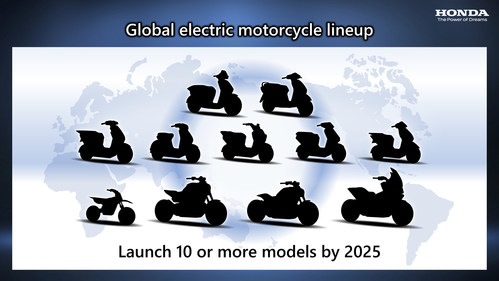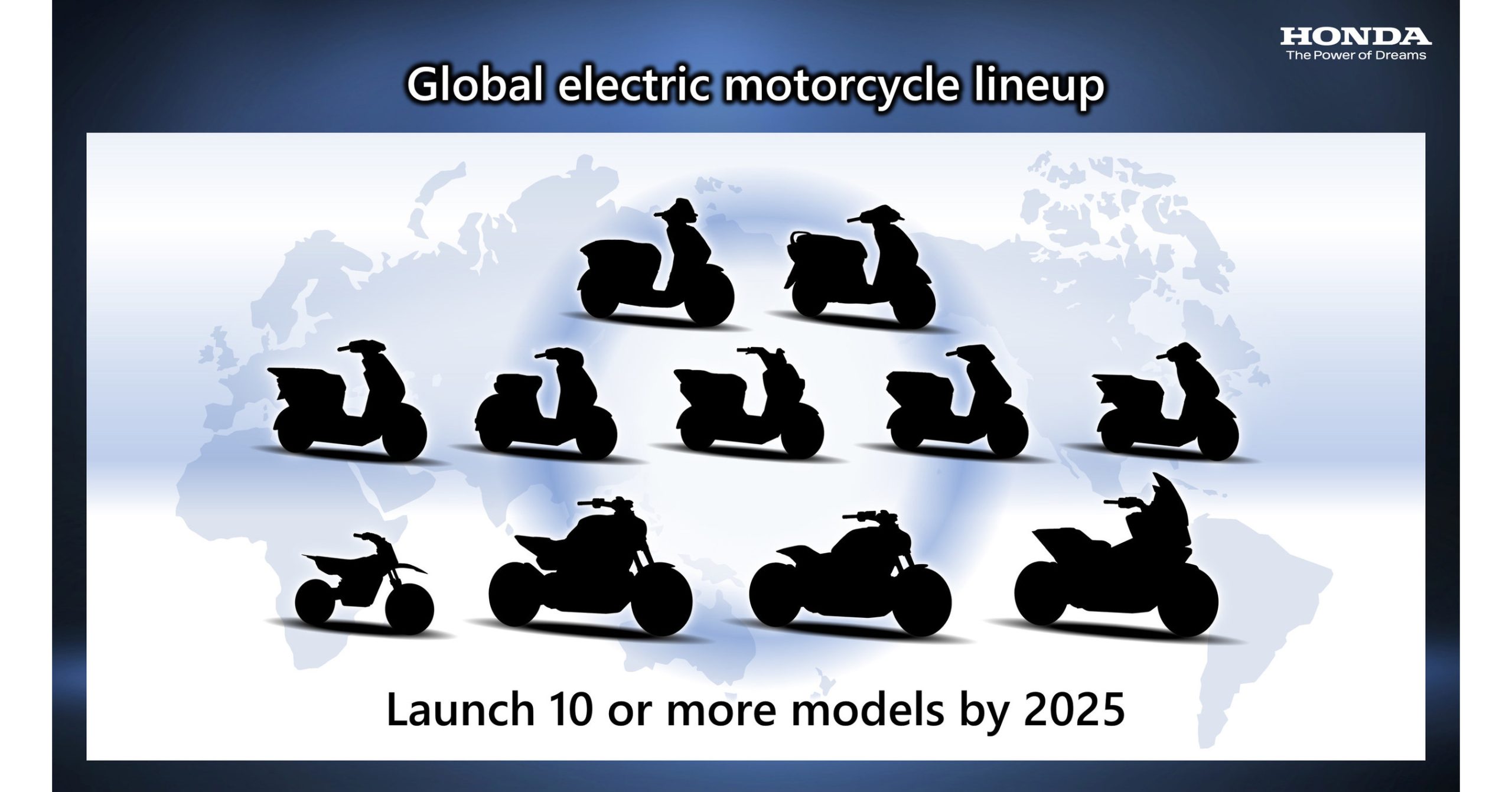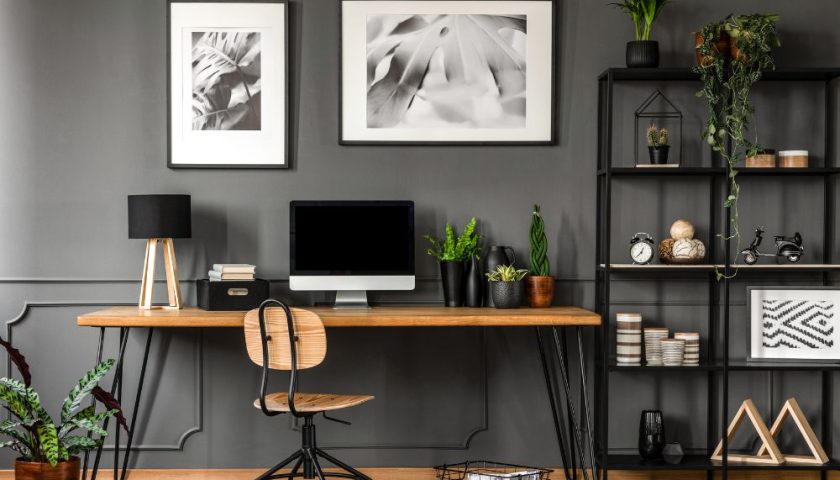– Achieving carbon neutrality with a primary focus on electrification –
|
Tokyo, September 12, 2022 /PRNewswire/ – Honda aims to achieve carbon neutrality for all products and corporate activities by 2050. Today, Honda released a press release regarding the motorcycle business initiative. Kohei Takeuchi (Director, Executive Vice President and Representative Executive) and Yoshishige Nomura (Managing Officer).
A summary of the presentation follows.

In anticipation of the expansion of the market, Honda introduces electric motorcycles that cater to various customer needs. Combined with passenger models and recreational models, Honda will introduce more than 10 new electric motorcycle models by 2025, aiming to reach 1 million units of electric motorcycle sales in the next five years and 3.5 million units (15% of total sales) by 2030.
1. A carbon neutral approach to motorcycle products
To accommodate the diverse uses and needs of customers around the world, Honda offers motorcycle products ranging from small passenger models to large recreational models for use in developing and developed countries worldwide. In developing countries, there is a high demand for people’s lifeline in their daily life, especially in motorcycles, especially in commuter models; However, the popularity of electric models faces challenges such as heavy vehicle weight and high cost. Also, demand for electric models largely depends on government incentives, regulations and charging infrastructure provision in each market.
With these factors in mind, Honda will accelerate motorcycle electrification as a key focus of its environmental strategies for the motorcycle business, while continuing to advance ICE and aiming to achieve carbon neutrality for all of its motorcycle products by the 2040s. Honda also continues to lead the industry in its environmental initiatives.
.ICE’s next initiative:
To realize carbon neutrality while addressing customer needs and usage environments unique to motorcycles, Honda continues its initiatives to reduce CO.2 Emissions from ICE models, as well as models compatible with carbon neutral fuels such as gasoline-ethanol blends. To be more clear, in addition Brazil Where flexible-fuel (E100)*1 Motorcycle models are already available, Honda plans to introduce flexible fuel models IndiaAlso one of the major motorcycle markets. The plan is to introduce flex-fuel (E20) first. *1 models starting in 2023, and flex-fuel (E100) models in 2025.
* 1 gasoline-ethanol blend fuel. Various blend values are available from 100% gasoline to 100% ethanol. E100 is 100% ethanol, and E20 is 20% ethanol.
2. Electrification initiatives
.Introducing electric motorcycle models to meet the needs of a wide range of customers:
In anticipation of the expansion of the market, Honda introduces electric motorcycles that cater to various customer needs. Combined with passenger models and recreational models, Honda will introduce more than 10 new electric motorcycle models by 2025, aiming to reach 1 million units of electric motorcycle sales in the next five years and 3.5 million units (15% of total sales) by 2030.
The details of the product launch plans are as follows:
(1) Passenger EVs
As businesses become more environmentally conscious, the demand for electric motorcycle models for commercial use has increased in recent years. To meet this demand, Honda is introducing the Honda e: Business Bike series of models and is accelerating global business use electric motorcycles. In addition to supplying the Honda E: Business Bicycle Series model to Japan Post and Vietnam Post Corporation*2 For mail delivery, Honda is currently conducting joint trials with Thailand Post Company Limited.*3And planning to start production and sales of Benly: In Thailand Before the end of this month. These Honda e: Business Bike series models are equipped with Honda Mobile Power Package (MPP) replaceable batteries, which are suitable for business that address key challenges such as shipping small packages and issues of range and charging time. It is necessary to pay attention to the widespread use of electric motorcycles.
For private use, Honda plans to introduce two passenger EV models between 2024 and 2025. Asia, Europe And Japan. Assessing the future market environment, applications and technological developments, Honda is exploring various future personal use models, including those equipped with power sources in addition to removable batteries.
(2) Traveling M.M*4 / E.B.S*5
Currently, EM and EBS account for more than 90% of industry-wide electric motorcycle unit sales (approximately 50 million units). in ChinaIn the world’s largest electric motorcycle market, EMS/EBS is widely accepted as a convenient daily routine, and Honda has been providing such products using domestic supplier infrastructure and development/manufacturing operations. Anticipating that demand for EMs/EBs will continue to expand globally, Honda plans to introduce a total of five compact and affordable EM and EB models between now and 2024. Asia, Europe And Japanin addition China.
(3) Fun EVs
In addition to commuter EVs, Honda is actively working on electric models in the “FUN” category. Based on the FUN EV platform currently under development, Honda plans to introduce a total of three large-size FUN EV models. JapanAmerica and Europe Between 2024 and 2025. Honda also introduces a fun EV model for children, designed to transmit the joy of riding to the next generation.
* 2 Vietnam Post Service
*3 Thailand Postal service
* 4 electric moped category. Maximum speed: 25km/h – 50km/h
* 5 electric bicycle category, excluding electric assisted bicycles. Maximum speed: 25 km/h or less.
.High efficiency “Monozukuri” to expand the range and sales of the electric model.:
Based on the competitor’s knowledge of “monozukuri” (the art of making things), developing and implementing platforms for ICE-powered models, Honda develops electric motorcycle platforms that combine the three main components for electric vehicles – battery, PCU and motor – with the motorcycle body. Honda continues to provide the joy of mobility with affordable electric motorcycle models, meeting the needs of customers with highly efficient monozukis.
As for the battery, which is an integral part of electric vehicles, Honda plans to equip all of its electric motorcycle models with a solid battery.
3. Smooth and intelligent use of electric motorcycles
.Initiative to improve charging infrastructure and standardize batteries:
For the widespread use of electric motorcycles, the development of charging infrastructure and the standardization of battery parameters are very important. As part of its charging infrastructure upgrade, Honda is working to popularize battery sharing.
(1) Popularity of battery sharing
- Honda has established a joint venture IndonesiaOne of the major motorcycle markets, using MPPs and MPP-powered motorcycles to operate a battery sharing service. The JV is currently operating a battery sharing service in Bali.
- in IndiaHonda plans to launch its battery-sharing service for electric tricycle taxis (called “rickshaws”) later this year. Honda also plans to expand its initiatives to introduce battery sharing to other Asian countries.
- in JapanIn April of this year, ENEOS Holdings, Inc. and the four major Japanese motorcycle manufacturers*6 Incorporated Gachaco Inc. The company plans to launch its motorcycle battery sharing service this year.
(2) Standardization of batteries
- in JapanFour major Japanese motorcycle manufacturers have agreed on common standards for replaceable batteries based on JASO TP21003.*7 Instruction.
- While Honda is involved in battery coordination, it is working to standardize interchangeable batteries. Europe*8 And working with a partner company India.
* 6 Honda, Kawasaki Motors, Ltd., Suzuki Motor Corporation and Yamaha Motor Co., Ltd.
*7 Association of Automotive Engineers JapanInc. Organization (JASO) Technical Paper TP21003, “Guidelines for replaceable batteries for electric two-wheeled vehicles”.
* 8 The 8 Flexible Batteries Motorcycle Consortium (SBMC) was established with the aim of achieving widespread adoption of electric motorcycles and other small-scale electric mobility products.
.Consolidation of software technology areas:
To add value to its electric motorcycles, Honda is moving its business from a focus on non-recurring hardware (product) sales to a recurring business model combining hardware and software.
In the area of software development, Honda is working with its software subsidiary Drivemode.*9To enhance new value creation for its electric motorcycle products in the connected state. In the year Starting with the Commuter EV model planned for sale in 2024, Honda User Experience (UX) will provide features that continuously enrich the quality of driving through connectivity, such as offering optimal route options that take into account the remaining range, location announcements, safe driving training and after-sales service support.
Looking ahead, Honda will work to establish a connected platform where the highest value will be generated not only by connecting the motorcycles, but also by connecting a wide range of Honda products and realizing the connection beyond their product domain.
*9 Developer of software that transforms UX for portability. Drivemode builds smarter, safer and more connected driving technology for people on the road.
Source Honda






